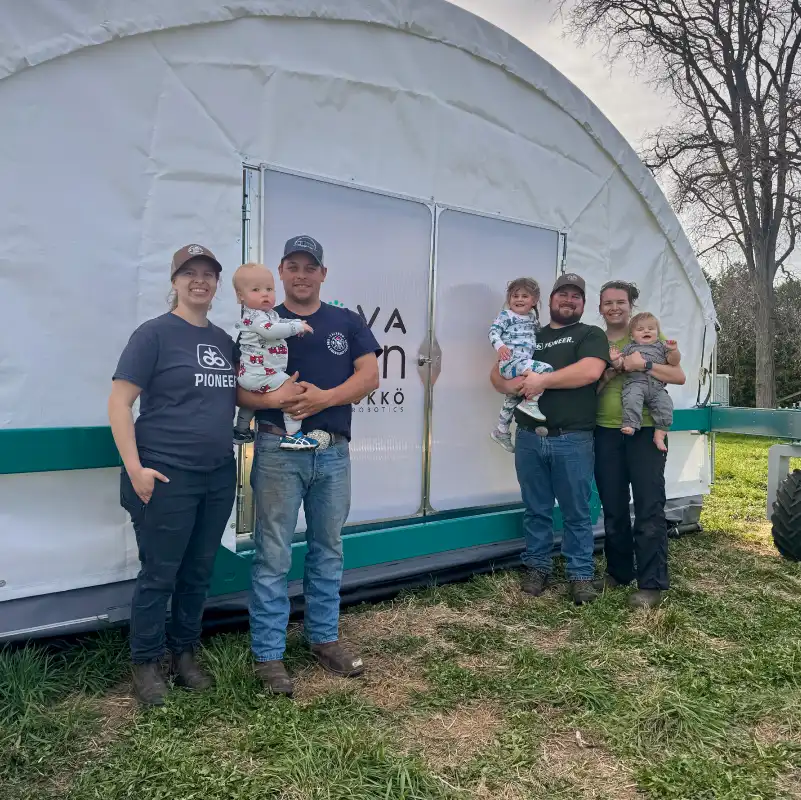On their mixed family farm in Caledon, Ontario, Casie and Tom De Boer do a little bit of everything.
They run a dairy operation with 110 milking cows, tend to a 5-acre sweet corn patch and a 2-acre market garden, and produce everything from maple syrup to honey, beef, eggs, and pasture-raised chicken. Most of it is sold through their own on-farm store, De Boers Market, or at local farmers’ markets.
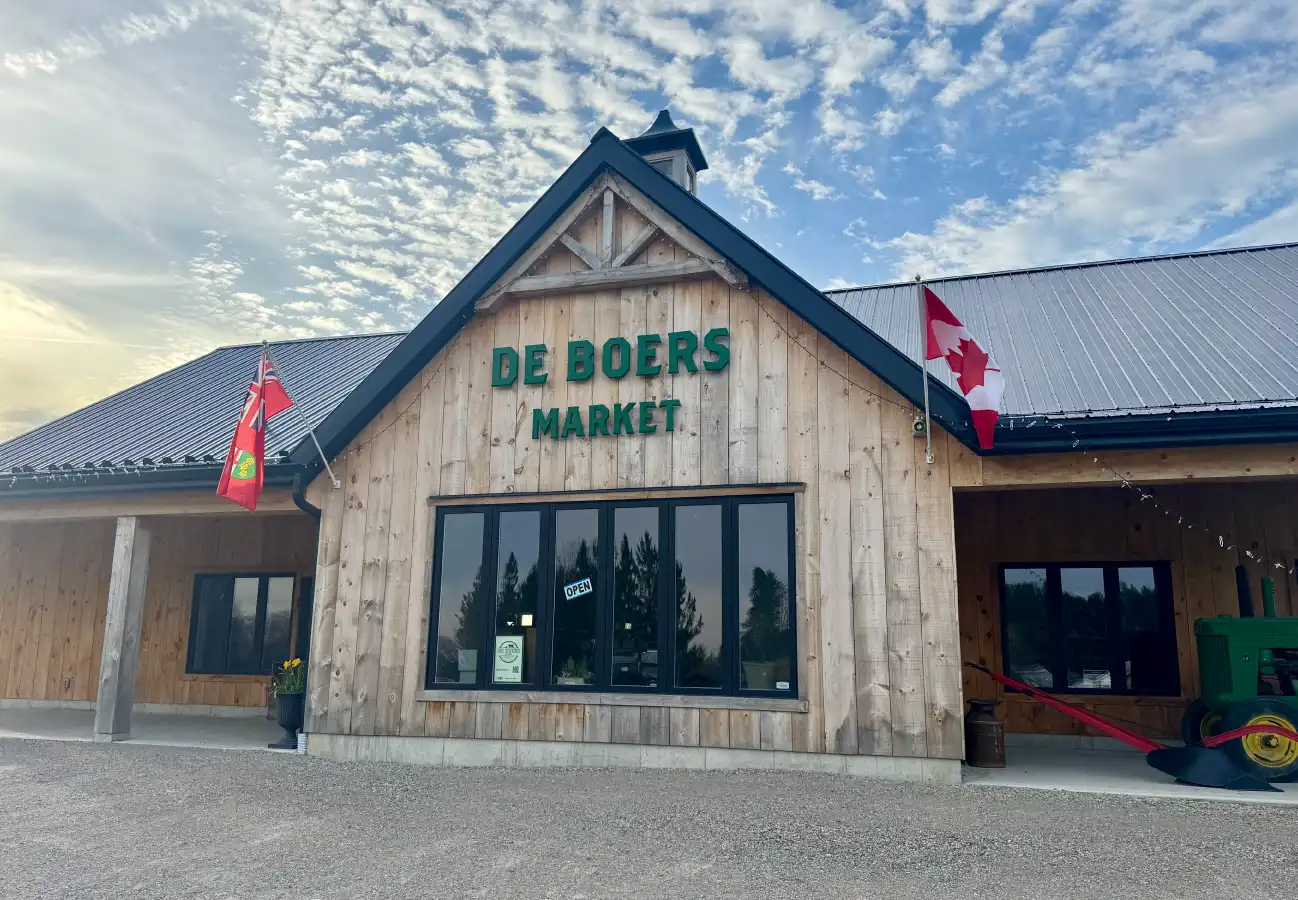
When they first added broiler chickens to the mix, they started with a homemade chicken tractor. But it quickly became more work than it was worth.
“When we had our old chicken tractors, we would pull them around by ourselves twice a day,” they told us. “In the last two weeks of the season, we would lose birds because they didn’t move very much.”
In 2021, Casie and Tom purchased their first ROVA|BARN 400, becoming UKKÖ Robotics’ very first customers in Ontario. Since then, they’ve completed two full pasture seasons and raised three batches of 300 broilers each year through the Artisanal Chicken Program of Ontario.
Since upgrading to the ROVA|BARN, things have changed. With automated daily moves, remote monitoring, and built-in feed and water systems, the De Boers now raise healthier, more active birds, and with a lot less stress.
"It’s a better way to keep the chickens moving. The difference it made was incredible."
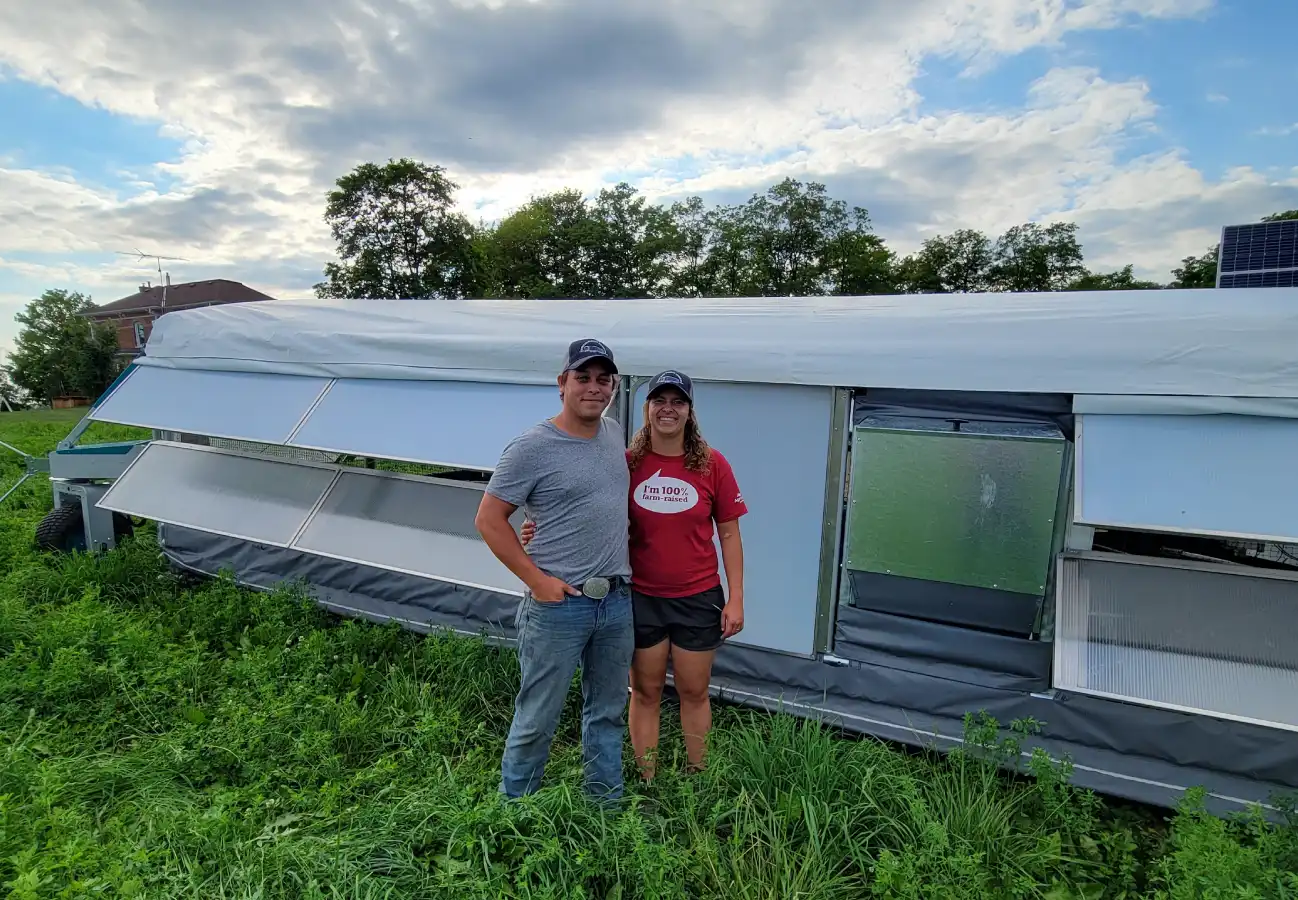
Consistency and Time Saved
The first thing they noticed was bird health and consistency.
“Before, you’d have birds sitting at the feeder at 10 lbs, and others that were more hesitant, eating grass and bugs instead, and they’d be more like 4 lbs. But with the ROVA|BARN, it was a lot more consistent: 5–6 lb birds all around.”
The second thing they noticed was time saved—and lots of it.
"Some days we’d be out until 9 p.m., dragging coops around, filling feeders and waterers. Now, we just walk out, check the ROVA, and head back in. What used to take 45 minutes takes five."
Casie and Tom also enjoy watching their chickens interact with the ROVA.
"They loved the alfalfa and the dandelions; they just ate it all out—only the stems were left. It’s always fun to watch them when they start moving and go running over.”

From 900 to 2,000 Birds
The De Boers didn’t stop there. In 2025, they purchased a second unit, the ROVA|BARN 700, to help meet growing customer demand and keep up with their expanded production goals.
“We were selling out of all the pastured chicken we raised, plus birds from another ROVA in Grand Valley. Increasing production was necessary to have chicken to offer year-round.”
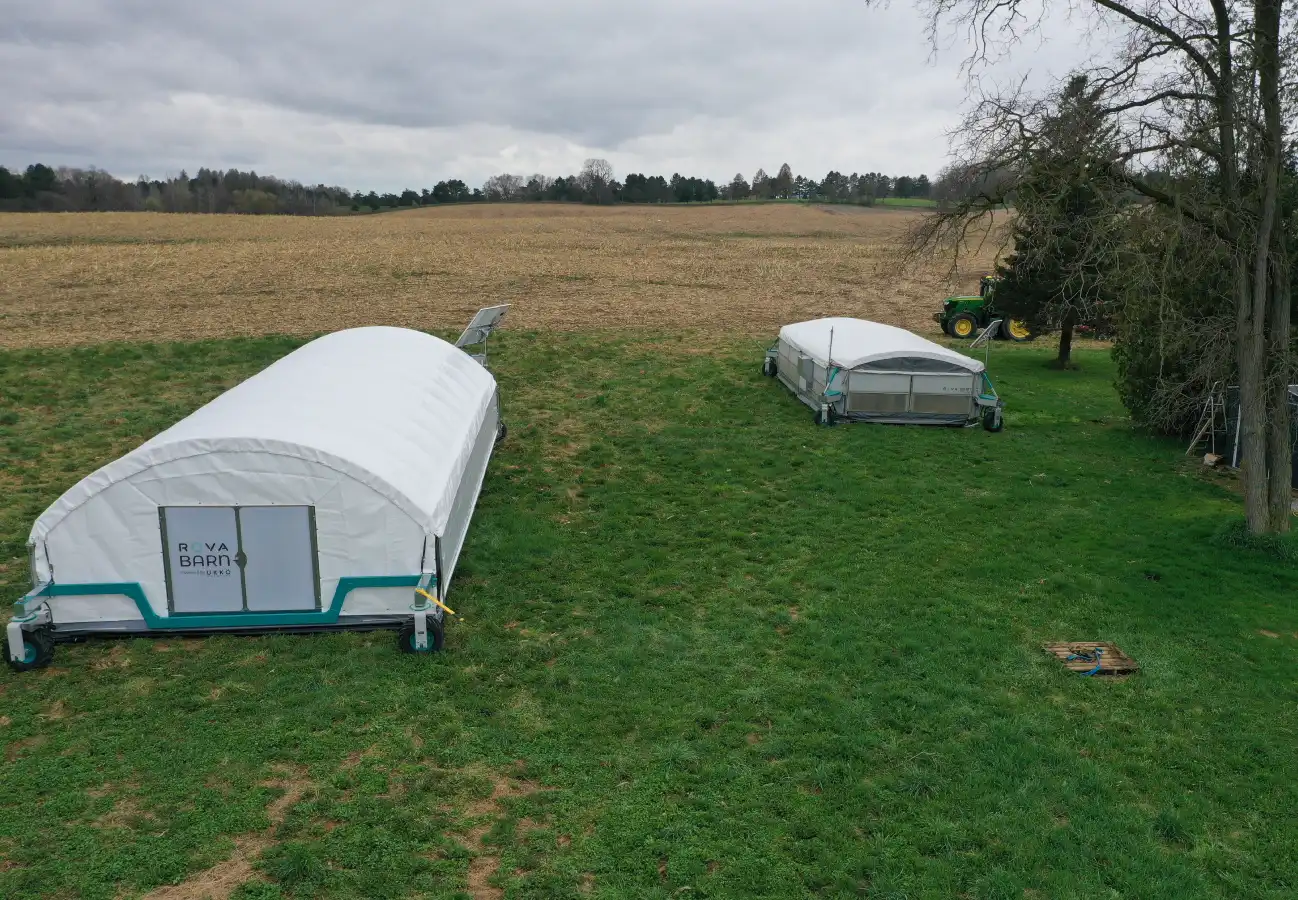
With the two barns running side by side, they’re now raising four batches of 500 birds and almost doubling their annual production.
“The automation that the ROVA brings allows us to follow that demand efficiently.”
They’re also retrofitting their original ROVA with tech upgrades so it can keep working alongside the new unit, helping them max out the Artisanal Chicken Program’s production limit next year.

Bigger Farm, Same Values
Alongside growing their poultry operation, Casie and her sister Kori built a new on-farm store and butcher shop. They now process their own beef and chicken and have expanded their offerings significantly, all while continuing to run a full dairy operation.
“Customer demand has been the big driver. Building a proper storefront and butcher shop has allowed us to serve and attract more people, and improved systems have helped us grow without adding labour costs.”
The new ROVA|BARN also brings some tech improvements they’re especially happy about.
“It’s on cellular data instead of Wi-Fi, so connectivity shouldn’t be an issue. It’s been simplified and made more efficient and user-friendly, yet more technical where it counts. Simplified steering means less room for mechanical failure, and better sensors make daily chores more efficient.”
And day-to-day, it’s still as easy as ever.
“We’ll check two ROVAs instead of one.”
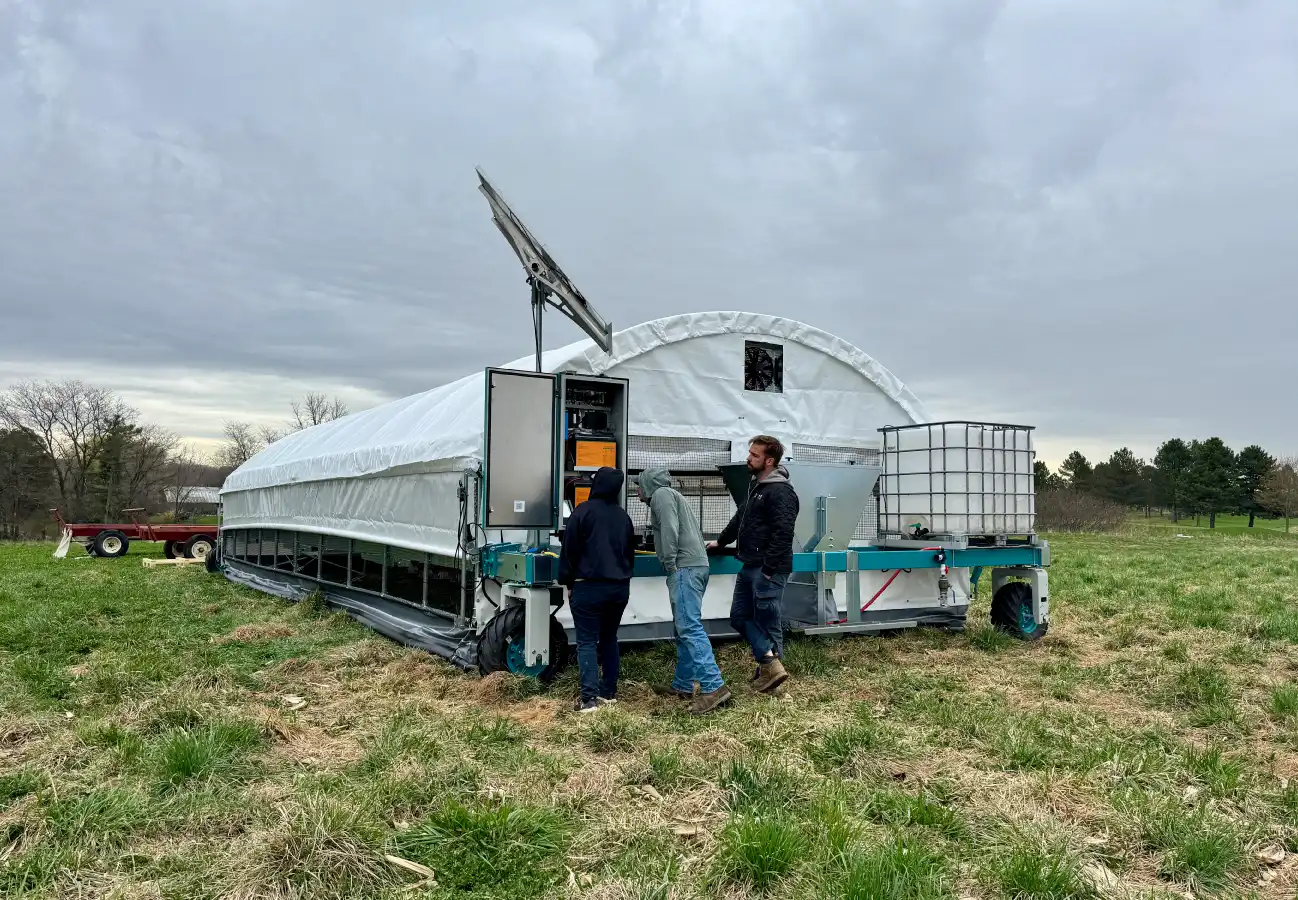
Smart Farming Tech
At UKKÖ Robotics, we build solar-powered, smart barns that make pasture-based farming easier and more efficient. Whether you’re raising 300 birds or 3,000, the ROVA|BARN helps reduce labour, improve welfare, and support regenerative systems.
To learn more about the ROVA|BARN 400 or explore which model might be right for your farm, book a demo or send us a message today.


